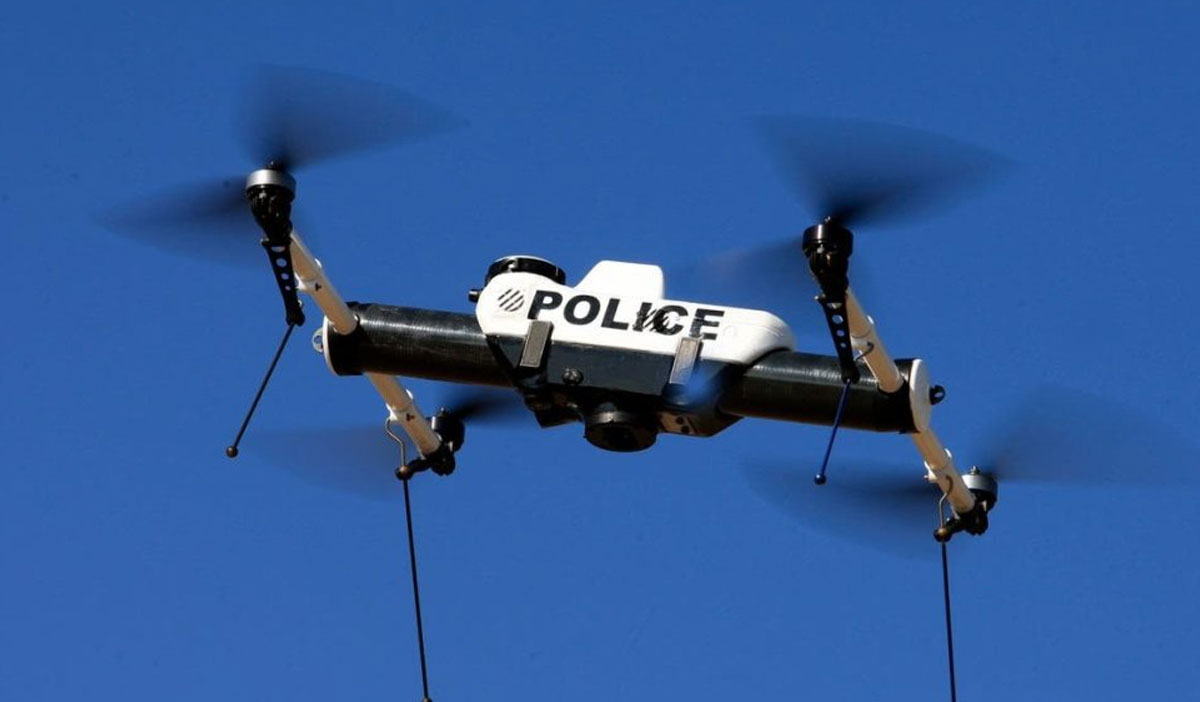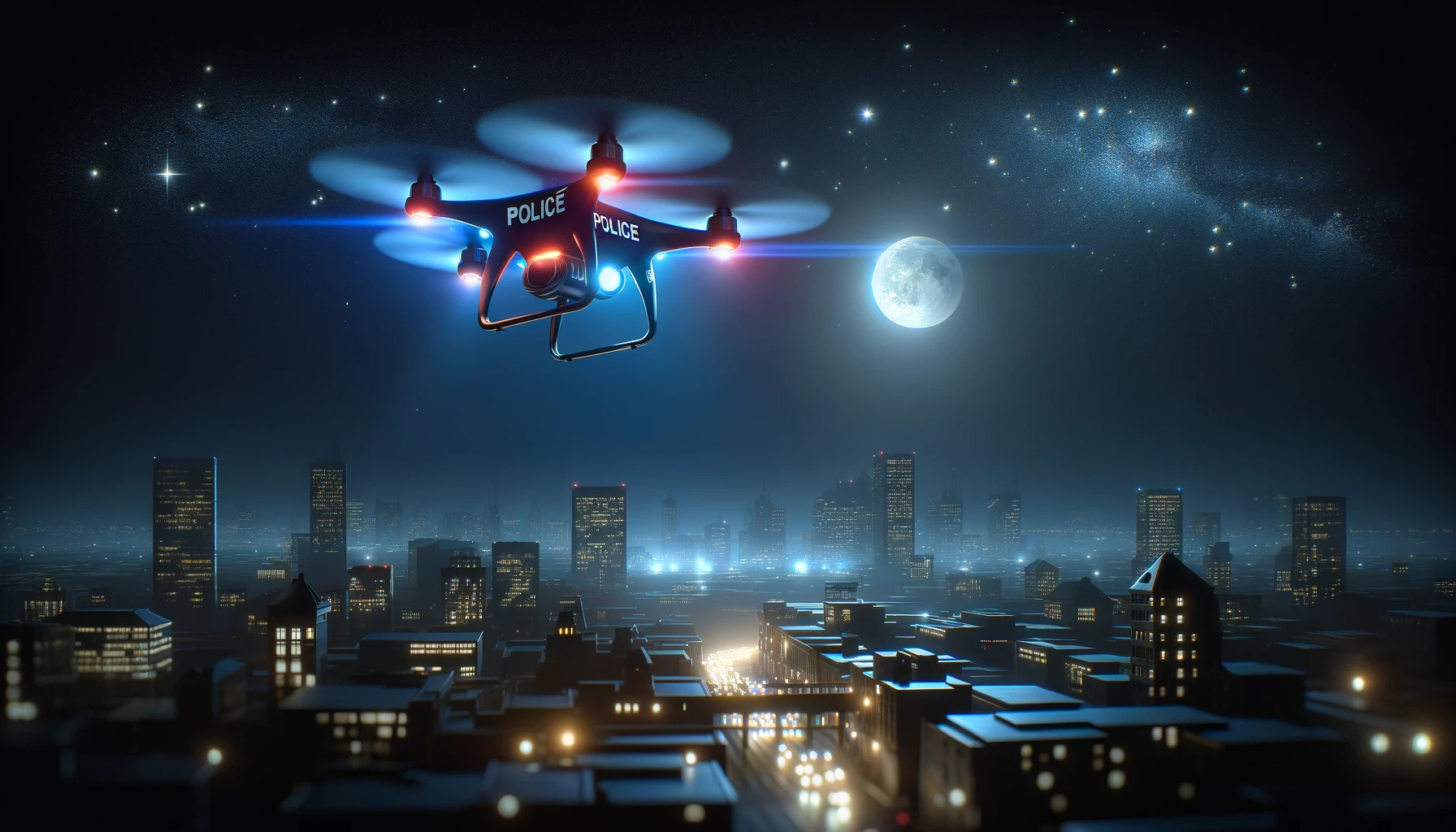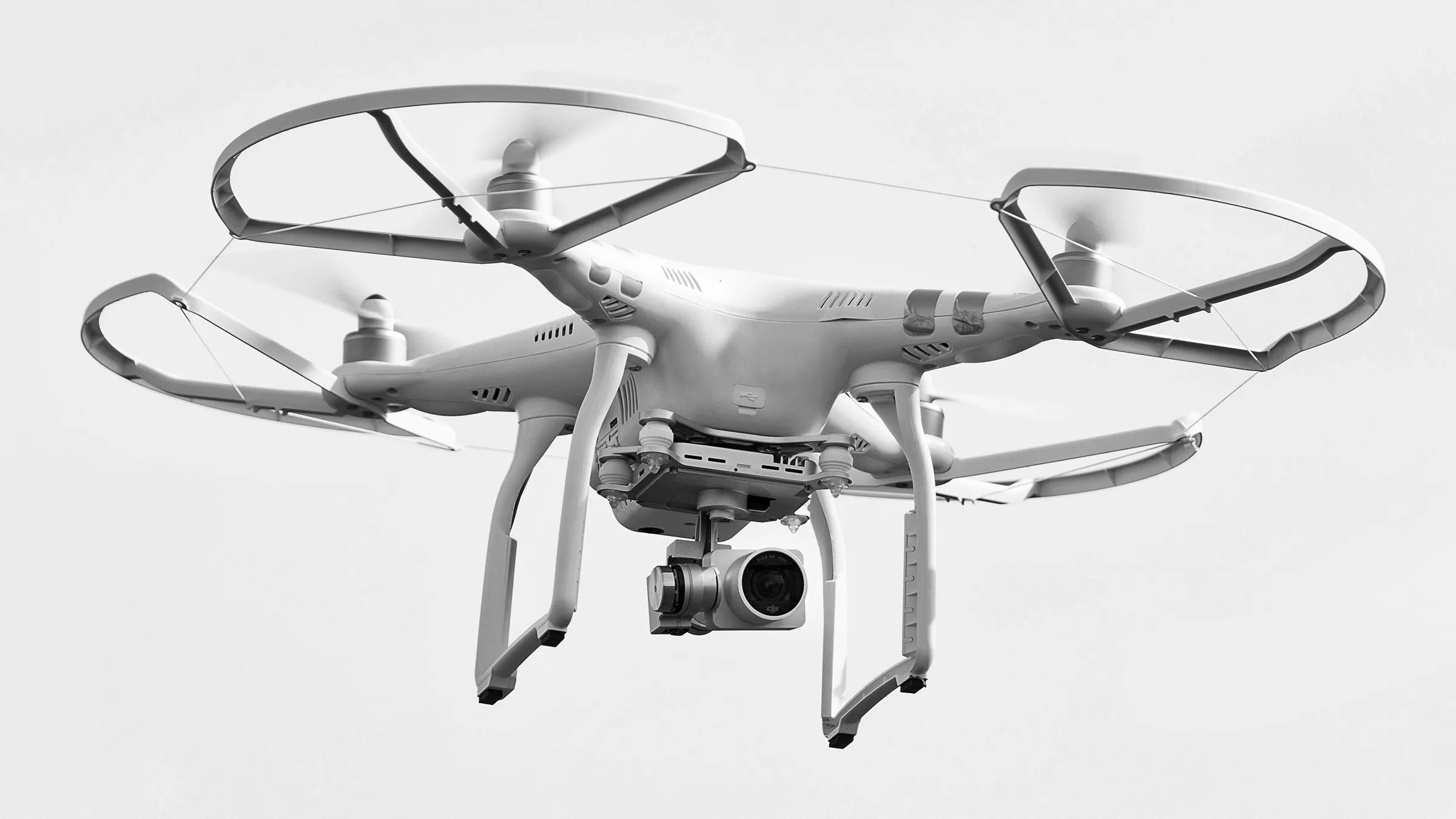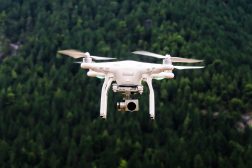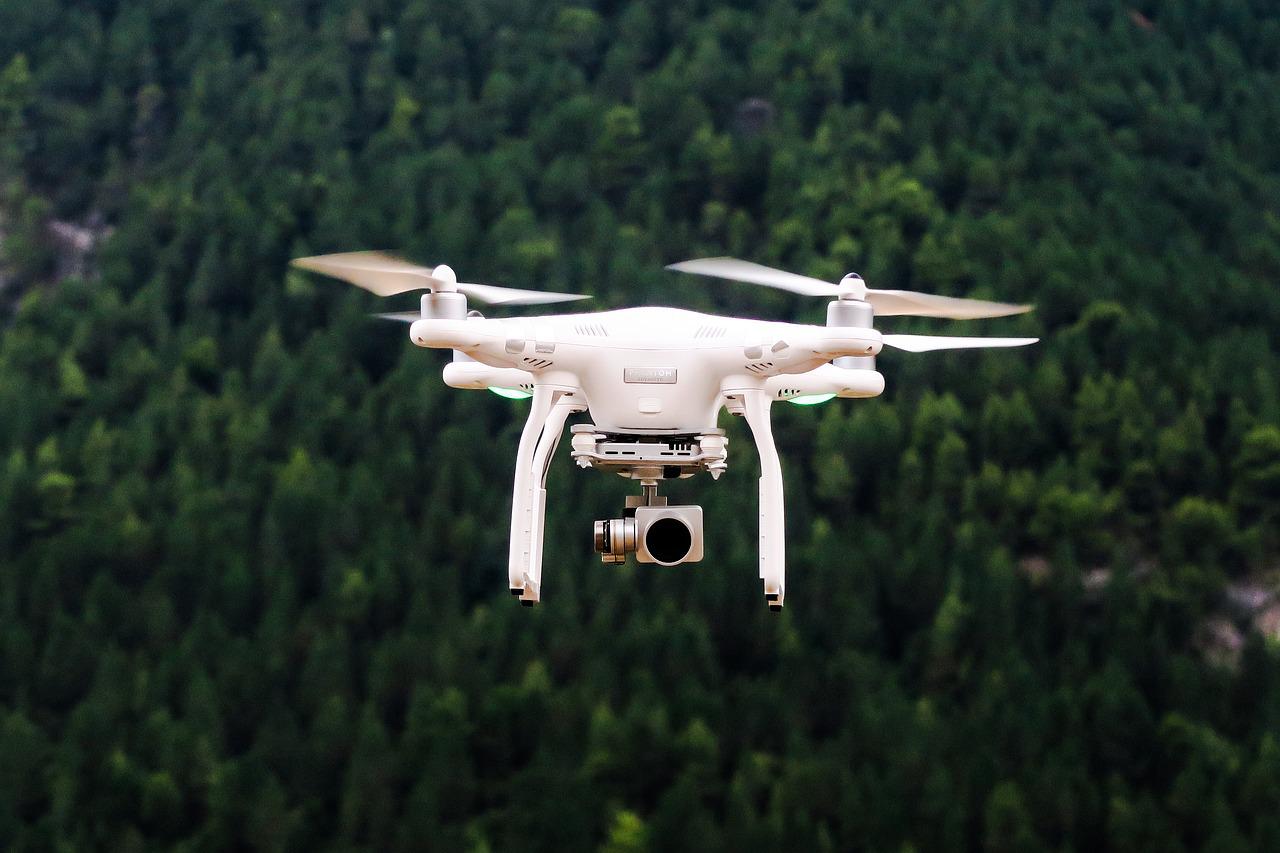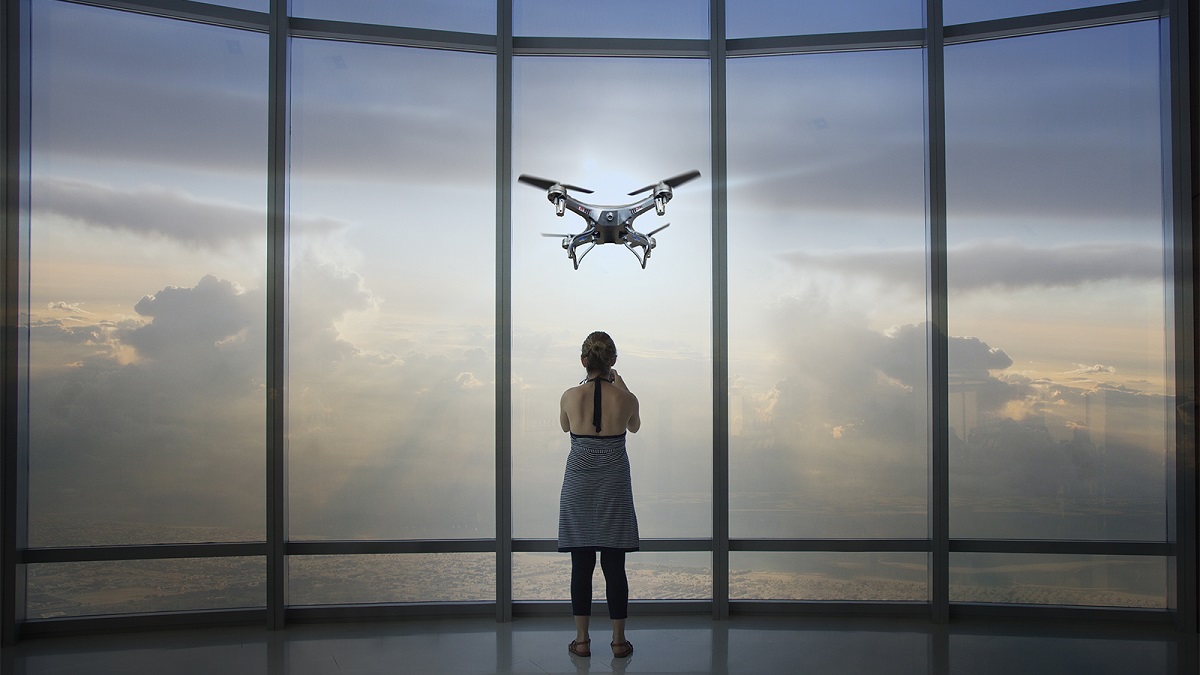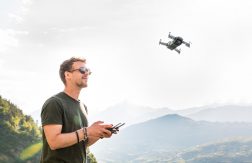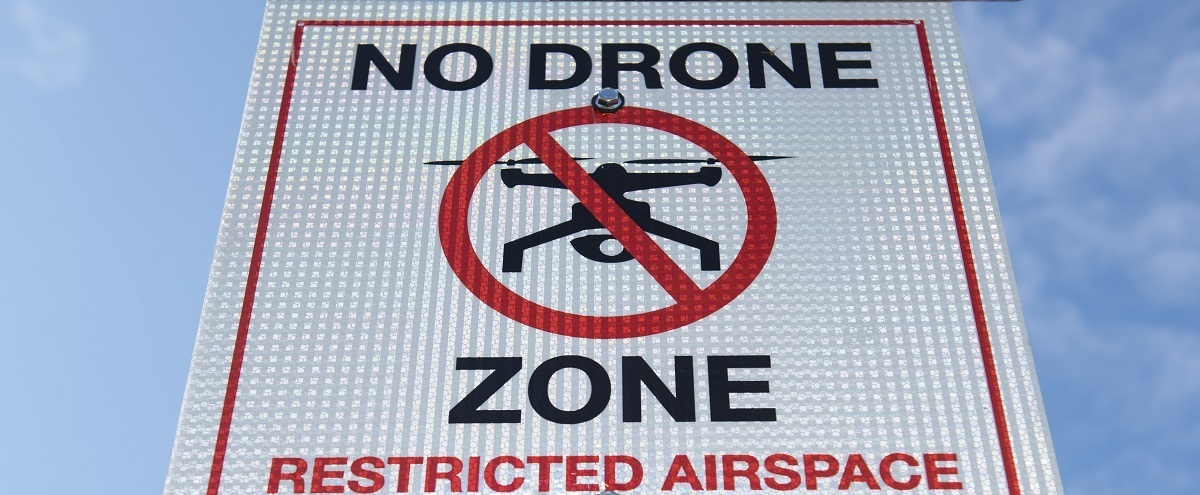Introduction
Police drones have revolutionized law enforcement operations with their ability to access hard-to-reach areas, monitor large crowds, and gather valuable evidence. These unmanned aerial vehicles (UAVs) have become an indispensable tool for police departments around the world.
Unlike regular consumer drones used for recreational purposes, police drones are specifically designed and equipped to meet the unique demands of law enforcement. They are equipped with advanced technology and specialized features that enable them to perform tasks such as aerial surveillance, search and rescue operations, traffic management, and crime scene investigations.
This article aims to delve into the factors that determine a police drone’s flight time, discuss the battery life of police drones, explore advanced technologies that can extend flight time, consider the impact of weather conditions, and provide an overview of how long a police drone can typically stay in the air.
By understanding the capabilities and limitations of police drones in terms of flight time, law enforcement agencies can effectively plan their operations and maximize the efficiency of these aerial assets.
What is a Police Drone?
A police drone, also known as a law enforcement drone or an unmanned aerial vehicle (UAV) for police use, is a remotely operated aircraft that is specifically designed and equipped for police and law enforcement purposes.
These drones are equipped with a range of advanced features and technologies that enable law enforcement agencies to perform a variety of tasks more efficiently and effectively. They can be used for surveillance, search and rescue operations, traffic monitoring, crowd management, crime scene investigations, and much more.
Police drones are typically equipped with high-resolution cameras that allow for real-time video streaming and capture of high-quality images. They can be fitted with infrared sensors, thermal imaging cameras, and night vision capabilities, enhancing their surveillance capabilities in various lighting and weather conditions.
Furthermore, police drones often have the ability to fly at high altitudes, providing a bird’s-eye view of the surroundings and enabling officers to quickly assess situations and gather valuable intelligence. Some advanced models are even equipped with obstacle avoidance systems, GPS tracking, and automatic flight modes, making them easier to operate and navigate.
One of the key advantages of police drones is their ability to access hard-to-reach areas that may be dangerous or inaccessible to officers on the ground. They can swiftly cover large areas, aiding in search and rescue operations or tracking suspects.
In addition to their surveillance capabilities, police drones can also be equipped with payload systems to carry and deliver small items such as first aid kits, communication devices, or other essential supplies to individuals in need.
Overall, police drones have proven to be highly valuable tools for law enforcement agencies, providing enhanced situational awareness, improved response times, and increased operational efficiency. As technology continues to advance, we can expect further advancements in police drone capabilities, making them an integral part of modern law enforcement efforts.
How are Police Drones Different from Regular Consumer Drones?
While both police drones and consumer drones share similarities in terms of their basic functionality and design, there are several key differences that set them apart. These differences stem from the specific requirements and functionalities needed for law enforcement purposes.
1. Purpose: The primary difference between police drones and consumer drones lies in their purpose. Consumer drones are typically used for recreational or personal purposes, such as aerial photography or videography. On the other hand, police drones are specifically designed and equipped for law enforcement tasks, including surveillance, search and rescue operations, and crime scene investigation.
2. Design and Features: Police drones often have a more robust and rugged design compared to consumer drones. They are built to withstand challenging and harsh conditions, allowing them to operate effectively in various environments. Moreover, police drones are equipped with specialized features such as thermal cameras, night vision capabilities, and advanced sensors to aid law enforcement activities.
3. Payload Capacity: Unlike consumer drones, police drones have the capability to carry additional payloads. This feature enables law enforcement agencies to transport essential items such as first aid kits, communication devices, or other emergency supplies during search and rescue missions or other critical operations.
4. Legal and Regulatory Considerations: Due to their usage in law enforcement, police drones are subject to strict regulations and guidelines imposed by governing bodies. These regulations ensure the responsible use of drones in accordance with privacy and safety considerations. In contrast, consumer drones are subject to less stringent regulations, allowing users more freedom in their operation.
5. Training and Certification: Law enforcement officers undergo specific training and are required to obtain proper certification to operate police drones. This training covers not only the technical aspects of drone operation but also the legal and ethical considerations that come with using drones for law enforcement purposes. This ensures that police officers are proficient in handling drones and are aware of the potential risks and responsibilities associated with their usage.
Overall, the key differences between police drones and regular consumer drones lie in their purpose, design, features, legal considerations, and the training required to operate them. These distinctions enable police drones to be effective tools for law enforcement agencies, enhancing their capabilities in maintaining public safety and conducting various operations efficiently.
Factors that Determine a Police Drone’s Flight Time
The flight time of a police drone, or any drone for that matter, is influenced by various factors that affect the performance and efficiency of the aircraft. Understanding these factors is crucial for law enforcement agencies to effectively plan and execute their operations. Here are some key factors that determine a police drone’s flight time:
1. Battery Capacity: The battery capacity of a drone is a significant factor in determining its flight time. Drones are powered by rechargeable batteries, usually lithium-ion or lithium-polymer, which provide the necessary energy for flight. The larger the battery capacity, the longer the drone can stay in the air before requiring a recharge or battery swap.
2. Drone Weight: The weight of the drone, including any additional equipment or payloads, directly impacts its flight time. Heavier drones require more power to stay airborne, resulting in shorter flight durations. Law enforcement drones, which may carry specialized cameras, sensors, or rescue equipment, are generally heavier than consumer drones, which can affect their flight time.
3. Flight Speed and Maneuvers: The speed at which a police drone is flown and the maneuvers it performs during a flight can significantly impact its battery life. Flying at higher speeds or executing rapid maneuvers consumes more power, leading to decreased flight time. Law enforcement agencies often need to balance between achieving the desired speed and maneuverability while optimizing flight time and battery usage.
4. Payloads and Equipment: Any additional payloads or equipment attached to the drone, such as high-resolution cameras or thermal imaging sensors, can increase power consumption and reduce flight time. These additional features enhance the capabilities of law enforcement drones but come at the expense of reduced flight durations.
5. Environmental Conditions: Environmental factors, including temperature, wind speed, and humidity, can impact a drone’s flight time. Cold temperatures can decrease battery performance, while high winds can require additional power to maintain stability, reducing flight time. Also, flying in adverse weather conditions may not be safe or recommended, further limiting the drone’s flight time.
6. Battery Management and Maintenance: Effective battery management and maintenance practices can help maximize a police drone’s flight time. Regularly calibrating and balancing the batteries, ensuring optimal charging practices, and keeping the batteries in good condition can help prolong their lifespan and overall flight time.
Ultimately, the flight time of a police drone is influenced by a combination of these factors. Each law enforcement agency needs to assess these variables and consider their operational requirements to determine the ideal flight time and battery management strategies for their police drones. By optimizing these factors, agencies can maximize the efficiency and effectiveness of their drone operations.
Battery Life of Police Drones
The battery life of a police drone plays a crucial role in determining its operational effectiveness and flight time. Law enforcement agencies rely on the endurance of their drones to carry out various tasks, including surveillance, search and rescue operations, and crime scene investigations. Here are some key factors to consider regarding the battery life of police drones:
1. Battery Capacity: The battery capacity directly impacts the flight time of a police drone. Drones with higher-capacity batteries can fly for longer durations before requiring recharging or battery swapping. Battery capacity is typically measured in milliampere-hours (mAh). Law enforcement agencies often opt for drones with larger battery capacities to ensure extended flight times.
2. Battery Type: The type of battery used in a police drone can influence its flight time. Lithium-ion (Li-ion) and lithium polymer (Li-Po) batteries are commonly used due to their high energy density and low weight. These batteries offer a good balance between power output and weight, allowing drones to stay in the air for longer periods.
3. Power Consumption: The power consumption of a police drone depends on various factors, including the drone’s weight, flight speed, maneuvers, and additional equipment or payloads. Drones equipped with high-resolution cameras, thermal imaging sensors, or other advanced features may consume more power, resulting in shorter flight times. Law enforcement agencies need to carefully consider the power requirements of their drones and strike a balance between functionality and flight duration.
4. Battery Management Systems: Some police drones are equipped with advanced battery management systems (BMS) that help optimize battery performance and prolong their lifespan. These systems monitor battery health, temperature, and charge levels, ensuring the batteries operate within safe limits. BMS can also provide warnings or alerts if battery levels are low, helping operators to safely land the drone before the battery is completely depleted.
5. Charging and Swapping: Efficient battery charging and swapping strategies can help maximize the operational uptime of police drones. Law enforcement agencies often employ multiple sets of batteries, allowing for quick battery swaps on-site, enabling continuous operation. Fast-charging technologies are also employed to minimize the downtime between flights.
6. Battery Aging and Maintenance: Over time, battery performance may degrade due to natural aging. Regular battery maintenance, such as proper charging and storage, can help slow down this aging process and maintain optimal battery performance. It is crucial for law enforcement agencies to implement battery maintenance protocols to ensure consistent and reliable performance from their drones.
Law enforcement agencies are continually exploring advancements in battery technology to improve the flight time of their drones. From longer-lasting batteries to more efficient power management systems, these advancements aim to extend flight times and enhance the capabilities of police drones for various operational scenarios.
Advanced Technologies to Extend Flight Time
As the demand for longer flight times increases, researchers and drone manufacturers are constantly developing advanced technologies to extend the operational endurance of police drones. These innovations aim to push the boundaries of flight time and enhance the capabilities of law enforcement agencies. Here are some advanced technologies that help extend the flight time of police drones:
1. Lightweight Materials: Using lightweight materials in the construction of drones can significantly reduce their overall weight, resulting in improved flight times. Carbon fiber, aluminum alloys, and composite materials are commonly used to achieve a balance between durability and weight reduction. These lightweight materials allow for increased payload capacity or longer flight durations.
2. Efficient Propulsion Systems: Innovative propulsion systems, such as brushless motors and efficient propeller designs, play a crucial role in extending flight time. Brushless motors provide higher power output while consuming less energy, thus maximizing efficiency. Custom-designed propellers with optimized blade shapes and sizes can further improve thrust efficiency, allowing drones to stay in the air for longer periods.
3. Aerodynamic Designs: Streamlined and aerodynamic designs can minimize air resistance and increase overall efficiency. By reducing drag, drones can require less power to maintain flight, resulting in extended flight times. Sleek designs and careful attention to airflow dynamics help improve the energy efficiency of police drones.
4. Energy Recovery Systems: Some advanced drones are equipped with energy recovery systems, such as regenerative braking or solar panels. Regenerative braking harnesses the kinetic energy generated during descent or braking maneuvers to recharge the batteries. Likewise, solar panels integrated into the drone’s structure can convert solar energy into electrical power, providing a supplementary charging source and extending flight times in daylight conditions.
5. Swappable Batteries: Swappable battery systems allow for quick and seamless battery exchange during operations. By carrying spare fully charged batteries, law enforcement agencies can replace depleted batteries swiftly, minimizing downtime and maximizing the drone’s operational endurance. Swappable battery systems are particularly useful for extended missions or situations where constant aerial surveillance is required.
6. Power Management Software: Advanced power management software helps optimize energy efficiency by regulating the drone’s power consumption. These smart algorithms monitor various flight parameters, including altitude, speed, and payload, and adjust power settings accordingly. By dynamically allocating power based on real-time demands, power management software helps maximize flight time and ensures efficient usage of available battery capacity.
7. Fuel Cell Technology: Although still in the early stages of development, fuel cell technology shows promise in extending the flight time of drones. Fuel cells generate electrical power by converting the energy stored in hydrogen or other fuels, producing longer flight times compared to traditional batteries. Fuel cell-powered drones eliminate the need for recharging, as fuel cells can be refueled quickly, enabling longer and more continuous missions.
By harnessing these advanced technologies and incorporating them into the design and function of police drones, law enforcement agencies can greatly extend flight times, enhance operational efficiency, and ultimately improve their ability to fulfill their mission objectives.
Weather Conditions and Their Impact on Police Drone Flight Time
Weather conditions play a significant role in determining the flight time and operational capabilities of police drones. Different weather elements can affect the drone’s performance, battery life, and overall flight duration. Understanding these impacts is crucial for law enforcement agencies to effectively plan and execute their drone operations. Here are some weather conditions and their impact on police drone flight time:
1. Rain and Moisture: Rainy conditions can have a detrimental effect on drone flight time. Water can damage the drone’s electronics and compromise its flight stability. Additionally, flying in heavy rain or in areas with high humidity can increase air density, requiring the drone to consume more power to maintain lift. This increased power consumption reduces flight time significantly.
2. Wind Speed: Strong winds can greatly impact a drone’s flight time. Flying against strong headwinds requires the drone to exert more power to maintain a stable position or advance against the wind. This increased power consumption can significantly reduce the drone’s flight time. Additionally, gusty winds can cause instability and make it challenging to control the drone, further limiting its flight duration.
3. Temperature Extremes: Both extremely cold and hot temperatures can affect drone battery performance and flight time. In cold temperatures, the battery’s chemical reactions slow down, reducing its overall capacity and output. Cold weather can significantly decrease flight times of police drones. Likewise, high temperatures can cause the battery to heat up quickly, leading to faster depletion and decreased flight times. Operating drones within the recommended temperature range helps maximize their performance and flight duration.
4. Fog and Low Visibility: Flying a drone in foggy or low visibility conditions can be extremely risky. Reduced visibility impairs the pilot’s ability to navigate and avoid obstacles, increasing the chances of collisions. Drones often rely on sensors and cameras for flight control, and these sensing capabilities may be compromised in foggy conditions. As a result, law enforcement agencies often restrict or avoid drone operations in dense fog or low visibility situations, which can impact flight time.
5. Thunderstorms and Lightning: Thunderstorms pose severe threats to drone flight. Lightning strikes can damage or destroy the drone’s electrical components, posing a safety risk to operators and bystanders. Additionally, the turbulent air currents and strong wind gusts associated with thunderstorms make it difficult to maintain flight stability. Law enforcement agencies must prioritize safety and avoid flying drones during thunderstorms, which can significantly impact flight time.
6. Atmospheric Conditions: Air density, altitude, and atmospheric pressure can affect the drone’s flight time. Higher altitudes have lower air density, which requires the drone to consume more power to generate sufficient lift. The decreased air density can significantly impact flight time as more power is needed to maintain stability and maneuverability. Additionally, changes in atmospheric pressure can affect the drone’s altitude hold capabilities and require additional power adjustments.
It is crucial for law enforcement agencies to closely monitor weather conditions and make informed decisions regarding drone operations. Conducting regular weather assessments and adhering to safety protocols will help ensure the longevity of police drone flights and the overall effectiveness of their operations.
How Long Can a Police Drone Typically Stay in the Air?
The flight duration, or how long a police drone can stay in the air, varies depending on several factors such as battery capacity, drone weight, flight conditions, and the tasks being performed. While the specific flight time may vary between different drone models and manufacturers, the average flight time for a police drone typically falls within a range of 20-40 minutes.
Battery capacity is a crucial factor in determining a drone’s flight time. Higher-capacity batteries can provide longer flight durations. Most modern police drones are equipped with lithium-ion or lithium-polymer batteries, which offer a good balance between energy density and weight. However, it is important to note that high-power demanding tasks such as carrying heavy payloads or flying against strong winds can significantly reduce the flight time.
The weight of the drone itself, along with any additional equipment or payloads, also affects flight time. Heavier drones require more power to remain airborne, resulting in shorter flight durations. Law enforcement drones are often equipped with specialized cameras, sensors, or other equipment, which can increase their weight and impact flight time accordingly.
Flight conditions such as wind speed, temperature, and altitude can also impact a drone’s flight time. Flying against strong headwinds or in high-altitude areas requires the drone to consume more power, reducing the flight time. Similarly, extreme cold or hot temperatures can affect battery performance and decrease flight durations. Adhering to recommended operating conditions and avoiding adverse weather situations helps maximize flight time.
Advancements in drone technology, such as efficient propulsion systems, lightweight materials, and energy recovery systems, have contributed to extending flight times. For instance, the use of brushless motors and aerodynamic designs helps improve power efficiency and reduce energy consumption, thereby maximizing flight time.
It is important for law enforcement agencies to consider the flight time when planning their drone operations. They may need to strategize and manage their resources effectively by having spare batteries and adopting fast battery swapping techniques to ensure continuous operation when longer flight times are required.
While the average flight time for a police drone typically falls within the 20-40 minute range, it is essential to note that ongoing advancements in battery technologies and drone design continue to push the limits of flight time. As technology progresses, we can expect to see further improvements in flight durations, enabling law enforcement agencies to perform their duties more effectively and efficiently.
Conclusion
Police drones have become invaluable tools for law enforcement agencies, revolutionizing their operations and enhancing their capabilities. Understanding the factors that determine a police drone’s flight time is crucial for law enforcement agencies to effectively plan and execute their drone operations.
From battery capacity and weight to flight speed and environmental conditions, various factors impact a police drone’s flight time. Law enforcement agencies must consider these factors in their drone selection, deployment, and operational strategies to optimize flight time and maximize the effectiveness of their drones.
Advanced technologies, such as lightweight materials, efficient propulsion systems, and energy recovery systems, continue to emerge, extending the flight time of police drones. These innovations improve the efficiency, endurance, and overall capabilities of law enforcement drones.
Moreover, weather conditions play a significant role in drone flight time. Rain, wind, temperature extremes, and low visibility can all impact a drone’s flight duration, requiring careful assessment and consideration. Adhering to safety guidelines and weather protocols is essential to ensure the longevity and safety of police drone operations.
While the typical flight time for a police drone falls within the range of 20-40 minutes, ongoing advancements in battery technology and drone design continue to push the limits of flight time. Law enforcement agencies should stay updated with the latest technological developments to leverage longer flight durations for more efficient and effective law enforcement operations.
In conclusion, understanding the factors that influence a police drone’s flight time, adopting advanced technologies, monitoring weather conditions, and implementing efficient operational strategies are all essential elements for law enforcement agencies to maximize the flight time and optimize the performance of their drone programs. By doing so, they can harness the full potential of police drones in enhancing public safety, improving situational awareness, and facilitating various law enforcement tasks.







